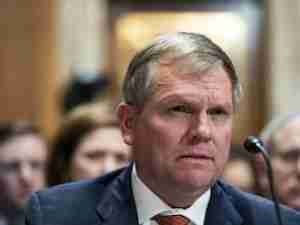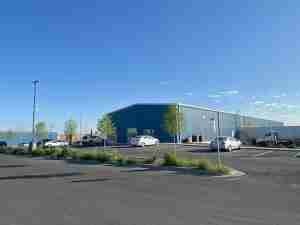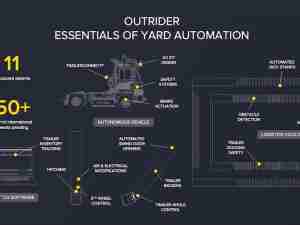Fitch Affirms Laredo, TX’s Toll Bridge System Revs at ‘A+’; Outlook Stable
posted by AJOT | Mar 21 2017 at 06:42 AM | Intermodal
Fitch Ratings has affirmed $21.7 million of City of Laredo, TX senior toll system revenue bonds and revenue refunding bonds at 'A+'. Laredo has an additional $17.3 million in senior revenue bonds and $14.6 million in subordinate revenue bonds that Fitch does not rate. The Rating Outlook is Stable.
KEY RATING DRIVERS
Summary: The rating reflects the bridge system's status as a vital international trade link within one of the fastest growing cities in the State of Texas. Despite economic pressures during the prior recession, the system remained resilient and has demonstrated an improving traffic and revenue profile. The credit also benefits from low leverage and a high debt service coverage ratio (DSCR). The rating further reflects the singular nature and limited catchment area of the bridge system as well as nearby competition along the Mexican border.
Strategic Location on Major Trade Route: (Revenue Risk: Volume- Midrange)
The bridge system serves as a major North American Free Trade Agreement (NAFTA) gateway, providing a direct land route from Monterrey and Mexico City to major cities in Texas and northbound along Interstate 35 up to the Canadian border. However, traffic volume is susceptible to economic cycles and political decisions on both sides of the border. While overall crossings have historically been affected by heightened border violence and economic downturn, commercial traffic, representing approximately 64% of toll revenues, has remained resilient.
Strong Economic Rate Making Flexibility (Revenue Risk: Price- Stronger)
The system's economic and political rate-making flexibility is demonstrated by its historical track record of raising toll rates and a relatively competitive toll structure.
Modest Capital Expenditure Needs (Infrastructure Development/Renewal- Midrange)
The system's bridges are in relatively good condition and funding for any future enhancements are expected to be predominantly bond-funded. The system currently has a five-year $5.5 million capital plan.
Conservative Debt Structure (Debt Structure- Stronger)
All outstanding debt is fixed rate with a 13-year maturity profile and a declining debt service schedule.
Low Leverage and Robust Coverage: The system's low leverage of .66 times (x) net debt/cash flow available for debt service and elevated total senior DSCR of 5.82x in FY 2016 indicate significant cushion against volatility in traffic. The system makes deeply subordinated surplus revenue transfers to the city's general fund equivalent to about 50% of toll revenues, while still ensuring high senior DSCR and maintaining adequate liquidity, currently at 336 days cash on hand. Fitch's Rating Case, which incorporates a substantial near-term traffic shock followed by modest growth, demonstrates future stability, with minimum senior DSCR of 5.32x through the life of the outstanding debt.
Peer Group:
Bridge systems in Cameron County and McAllen, TX are the Laredo system's closest peers. All three have low leverage and robust coverage levels exceeding 5.0x, though all of the bridges remain subject to fluctuations in traffic levels concurrent with safety concerns regarding border violence. Laredo's higher rating reflects its location along I-35, a vital international trade link, and its recent growth in traffic and revenue performance during the last recession.
RATING SENSITIVITIES
Negative: Significant traffic/toll revenue declines, reluctance to raise tolls as needed, and/or an inability to control O&M expenses which materially changes coverage and liquidity may result in downward movement on the rating.
Negative: Material changes in federal policy that would negatively affect trade with Mexico and the toll road's revenue growth prospects.
Positive: Positive rating action is unlikely in the near term given the bridge system's history of volatile traffic levels.
Performance Update
Total traffic increased by 2.8% in fiscal 2016, bringing total crossings to 10.4 million. Commercial, non-commercial, and pedestrian traffic grew by 4.1%, 3%, and 1.5%, respectively, in fiscal 2016. Overall traffic is down 23% since 2001, largely due to successive years of decline in vehicle traffic, which only began to rebound in 2013. The traffic decline is due in large part to safety concerns, border violence, and a weakened global economy. Favorably, total traffic has grown at a compounded annual growth rate (CAGR) of 3.2% since the systems lowest historical volume point in fiscal 2012. This shift in direction can be attributed to economic stabilization, a sharp decline in oil prices, and the continued health of the Maquiladora industry after rollbacks of legislation that imposed tax hikes. Based on initial data, traffic performance does not appear to be impacted by the change in Presidential administrations; total traffic in the first four months of fiscal 2017 approximates that of fiscal 2016.
Toll revenues increased 4.2% in fiscal 2016, continuing a consistent trend of growth, as reflected by a five-year toll revenue compound growth rate of 6.5%. Toll increases were implemented in 2013 on commercial and non-commercial traffic, while tolls charged to pedestrians have remained constant since 2007. The city currently has no further planned rate hikes but continues to evaluate future increases on an ongoing basis. The system transfers surplus system revenues to the city's general fund for operating expenses or for capital expenditures. The subordinate nature of revenue transfers mitigates the risk associated with off-system transfers. Management expects to continue to transfer up to 50% of toll revenue into the city's general fund. The 2016 transfer represented approximately 15.6% of the city's general fund revenue.
A 15.5% increase in 2016 operation and maintenance expenditures was largely driven by increases in personnel and contractual services expenditures. Despite of this increase, and largely as a result of revenue growth, total debt service coverage stood at a very strong 4.89x. The maintenance of strong coverage levels will continue to be a focus of the bridge system's credit metrics. Fitch views this level of cushion as necessary given the volatility in the traffic base that is tied to the performance of the maquiladora industry in Mexico, border security threats, and nearby competition. Similar to the other Fitch-rated international bridge systems in the 'A' rating category, Laredo's net debt-to-cash flow available for debt service (CFADS) of 0.66 in 2016 is very modest.
Fitch Cases
Fitch's base case assumed steady annual traffic growth of 1% each year. Toll rates, along with cash and reserves, are held flat at current levels. Operating expenses are set to grow at 2% each year. The resulting profile produced robust metrics with a 10-year average DSCR of 8.7x and average net leverage of 0.3x due to ample cash balances and rapidly amortizing debt.
Fitch's rating case assumed a traffic stress in FY2018 that decreases transactions by 10%, followed by no future recovery through final bond maturity. Toll rates, cash, and reserves are again held flat, while expenses are increased 2.5% annually. Resulting metrics remained robust despite stresses, with the 10-year average DSCR of 7.0x, and average leverage below 0.1x.
Asset Description
Laredo International Toll Bridge System is owned and operated by City of Laredo. Laredo operates international bridges between two Mexican states (Tamaulipas & Nuevo Leon). The city presently maintains four border crossings, three with Nuevo Laredo, Mexico and one with Colombia, Mexico. Laredo is at the center of the primary trade route, providing a direct land route from Monterrey and Mexico City to major cities in Texas along Interstate 35 and extends north to Chicago and Canada. It is the only border city strategically positioned at the convergence of all land transportation systems between Canada, the United States and Mexico.
SECURITY
The bonds are special obligations of the city secured by net revenue derived from the operation of the International Toll Bridge System.







